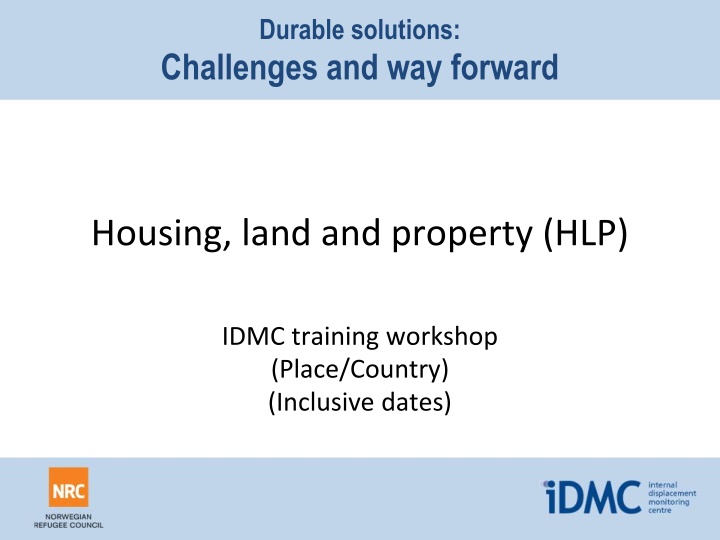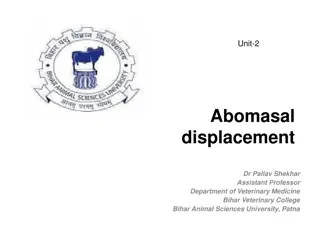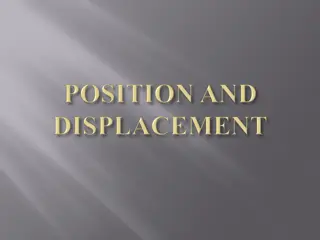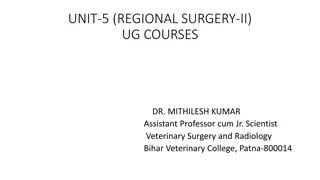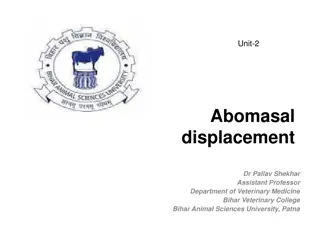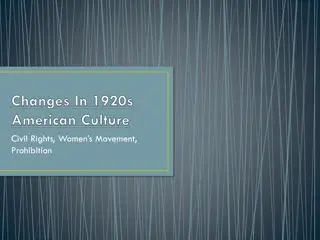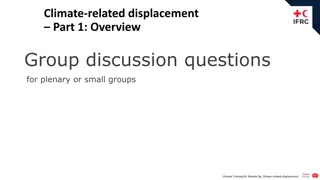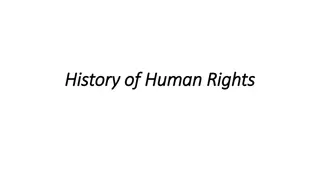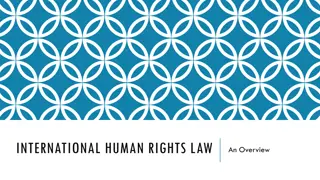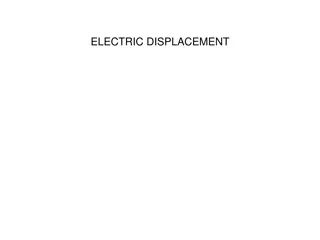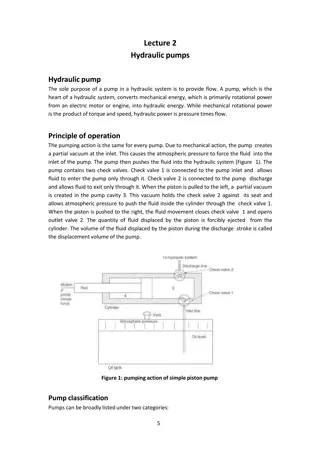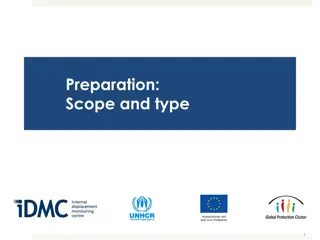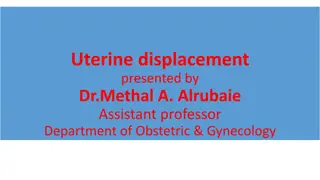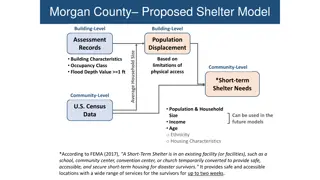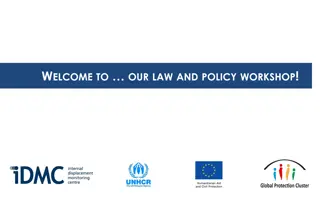HLP Rights and Durable Solutions in Displacement Situations
This workshop focuses on the importance of Housing, Land, and Property (HLP) rights in achieving durable solutions for displacement. It explores the challenges and ways forward in ensuring access to HLP rights, analyzing relevant instruments, and addressing issues in places of origin and refuge. The workshop also examines the links between HLP and displacement, highlighting the impact on shelter, livelihood, and obstacles to durable solutions.
Download Presentation

Please find below an Image/Link to download the presentation.
The content on the website is provided AS IS for your information and personal use only. It may not be sold, licensed, or shared on other websites without obtaining consent from the author.If you encounter any issues during the download, it is possible that the publisher has removed the file from their server.
You are allowed to download the files provided on this website for personal or commercial use, subject to the condition that they are used lawfully. All files are the property of their respective owners.
The content on the website is provided AS IS for your information and personal use only. It may not be sold, licensed, or shared on other websites without obtaining consent from the author.
E N D
Presentation Transcript
Durable solutions: Challenges and way forward Housing, land and property (HLP) IDMC training workshop (Place/Country) (Inclusive dates)
Objectives To undertstand the importance of HLP issues to the achievement of durable solutions To analyse instruments relevant to HLP issues in the context of durable solutions To propose actions to ensure access to HLP rights and to fulfil the criteria for durable solutions relevant to them
What do HLP rights mean? Land, home and livestock Formal title deeds Informal rights: right of use and tenure security, right to pass through, grazing rights, right to water Individual and collective rights Right to sell, rent, plant and harvest Property Tenancy rights Users rights Form of redress
Links between HLP and displacement HLP as a cause of displacement HLP as a means of forcing displacement HLP as consequence of displacement Loss of shelter and livelihood Disputes in place of origin and refuge HLP violations as obstacles to durable solutions and the rule of law
HLP in places of refuge Inadequate shelter: increased protection risks GBV and health and areas prone to disasters Insecure tenure: risk of forced eviction Limited access to land for subsistence Tension with hosts over resources Limited access to education and health facilities occupied by IDPs Relevant to the pursuit of durable solutions?
HLP in places of origin Degradation of infrastructure and boundary markers Occupation, squatting and illegal use Destruction and looting Loss of property records Confiscation/reallocation Prescription and abandonment laws Non-implementation of restitution commitments Exclusion of women, children and minorities Land declared unsuitable for residence (risk area) Landmines/unexploded ordnance (UXO)
Is there a right to land? No right to land in international law Still often a precondition to the fulfilment of a number of human rights Can you quote any of these rights? Right to food Right to health Right to housing Right to an adequate standard of living
Right to land and vulnerable groups Indigenous people: International Labour Organisation convention 169 Universal Declaration on the Rights of Indigenous Peoples, 2007 Guiding principle nine Women: Convention against all forms of discrimination against women (CEDAW) explicitly protects against possible discrimination in access to land
Legal framework and guidelines Guiding Principles on Internal Displacement, 1998 Principles on Property Restitution for Refugees and Displaced Persons (Pinheiro Principles), 2005 UN Basic Principles and Guidelines on Development- based Evictions and Displacement, 2007 UN Guiding Principles on Security of Tenure for Urban Poor, 2013 Food and Agriculture Organisation Guidelines on Responsible Governance of Tenure, 2012
Main HLP rights and state obligations IDPs have a right to adequate housing that includes tenure security and protection from forced evictions Property and left empty and possessions left behind because of displacement must be protected After the conflict, IDPs should be able to repossess their property or receive compensation The state should design mechanisms to address HLP disputes
HLP and durable solutions IASC framework on durable solutions: Relevant criteria Long term security and safety Adequate standard of living without discrimination Access to livelihoods and employment Access to civil documentation Effective and accessible mechanisms to restore HLP
HLP and access to livelihoods and employment Access to land is essential for IDPs for whom it is or was their main source of livelihood IDPs displaced from rural to urban areas unable to use their farming skills should be supported in acquiring new skills to facilitate to help them integrate locally IDPs returning to areas where houses and businesses have been destroyed, land occupied or livestock stolen face obstacles to durable solutions
HLP and adequate standards of living Access to employment and livelihoods is necessary for an adequate standard of living Adequate housing is one of the components of the right to an adequate standard of living Universal Declaration of Human Rights; International Convenant on Economic, Social and Cultural Rights (ICESCR), article 11.1 Precarious housing conditions and weak tenure security can be both a factor in vulnerability to displacement and a consequence of displacement
HLP and access to adequate housing ICESCR General Comment 4: Legal tenure security Availability of services, materials, facilities and infrastructure Affordability Habitability Accessibility Location Cultural adequacy ICESCR General Comment 7: Forced evictions are the removal against their will of individuals, families and/or communities from the homes and/or land which they occupy, without appropriate forms of legal or other protection. Human rights violation Criteria for a lawful and legitimate eviction
HLP and access to documentation Documentary: Documents in Haiti What are the challenges related to the issuing of documents and to HLP issues shown in the video?
HLP and access to documentation IDPs often lose documents proving their property rights during their displacement Cadasters and other property registers may be destroyed IDPs may never have had such documents Problems associated with lack title deeds: - Reconstruction assistance may be refused - Problems in the recognition of inheritance
HLP and safety and security Land disputes are a source of insecurity and may escalate Presence of landmines or UXO Loss of housing creates risks for single women and female heads of household Unaccompanied children often at risk of being trafficked Exposure of housing to disasters
HLP restitution in the Guiding Principles Responsibility of states to help IDPs recover, their property and possessions to the exent possible - principle 29.2 One of the measures inherent in IDPs achievement of durable solutions - principle 28 Restitution is the preferred remedy according to both the Guidling Principles and the Pinheiro Principles
Restitution as preferred solution Leaves all settlement options open Redress a wrong done, restorative justice A right per se: Pinheiro principle 2.2: The right to restitution exists as a distinct right and is prejudiced neither by the actual return nor non return of refugees and displaced persons entitled to HLP.
Compensation Envisaged when: Restitution is not possible - Guiding Principles and Pinheiro Principles The concerned party prefers compensation Pinheiro principle 21 Compensation may: Complement restitution Address destruction, loss of income Be cash or in kind
Dispute resolution mechanisms Judicial mechanisms Traditional mechanisms - pros and cons Ad hoc mechanisms - Burundi Administrative mechanisms - Bosnia Herzegovina Defining the rights covered scope Training those affected on their rights
Pinheiro Principles On property restitution for refugees and IDPs Same concept as the Guiding Principles: They do not create new rights but bring together principles relevant to HLP rights. Difference: They include principles based on good practice from previous restitution programmes. New: They broaden the scope of restitution to non-owners, such as informal rights holders and tenants: - Right to adequate housing, including security of tenure - Right to privacy and respect for the home - Right to the peaceful enjoyment of possessions
Group activity Four groups/four themes: Non-owners Women and tenure security No-build zones and relocation Restitution/compensation - Identify obstacles for your assigned issue and discuss how they may impede the achievement of durable solutions - Propose possible solutions and recommendations
Conclusions HLP rights include formal and informal titles, individual and collective rights, property, tenancy and use Loss of shelter and livelihoods and HLP disputes in places of origin and refuge may be obstacles to durable solutions Fulfilment durable solutions criteria is closely linked or is relevant to HLP issues The Pinheiro Principles favour restitution over compensation, but not the latter s exclusion
